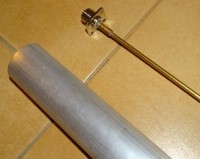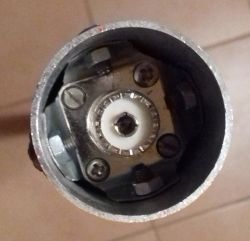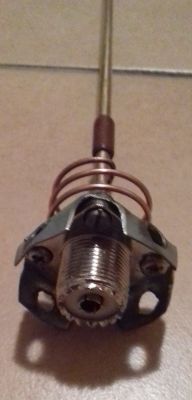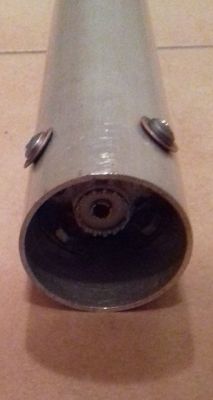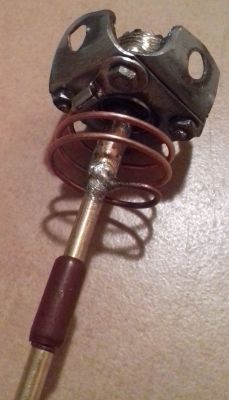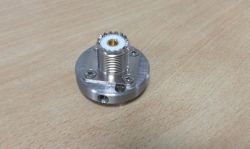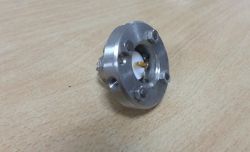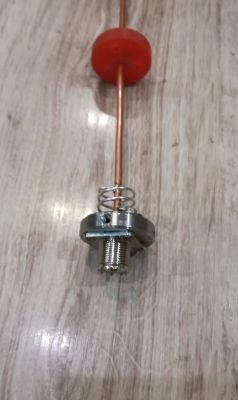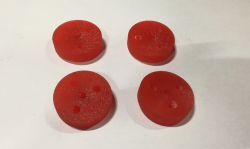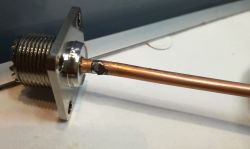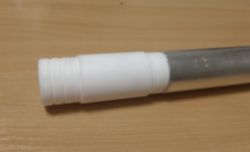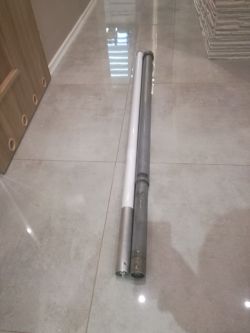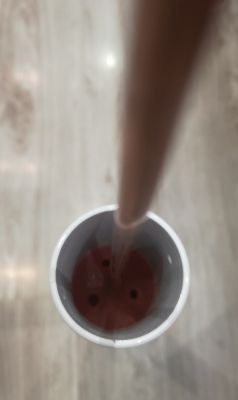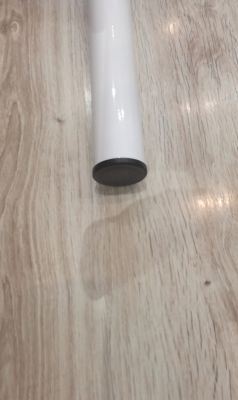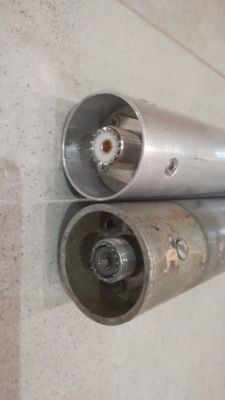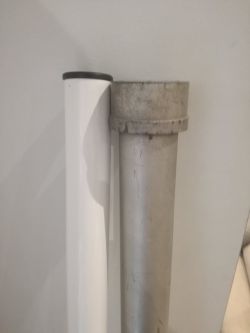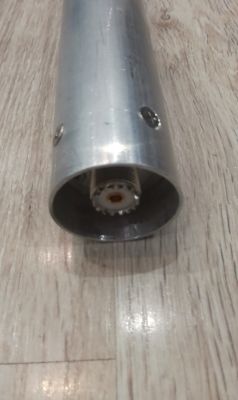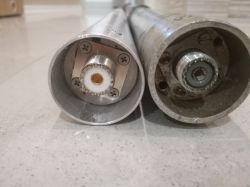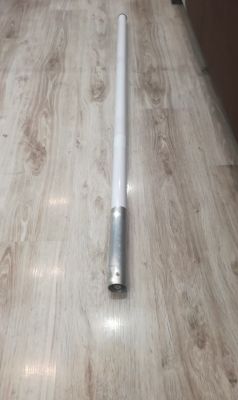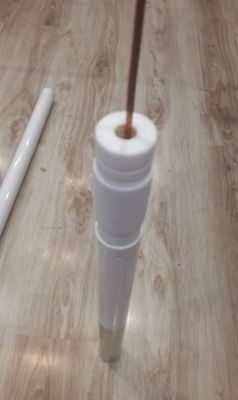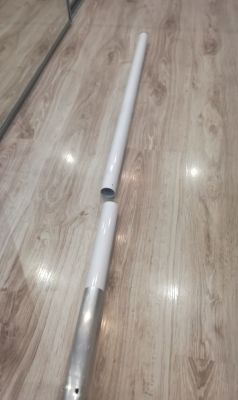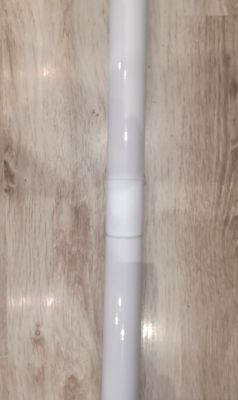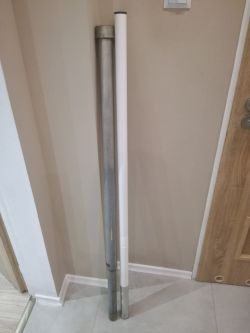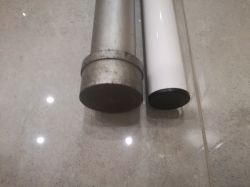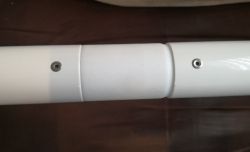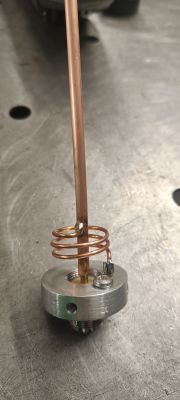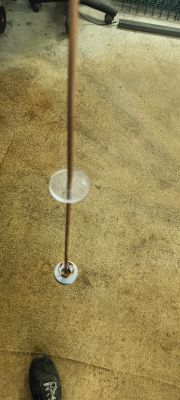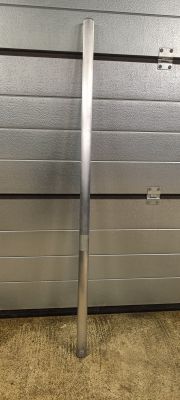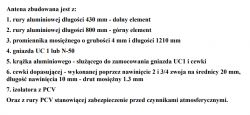FAQ
TL;DR: A correctly built Radmor 32812/1 clone can deliver 5-7 dB stronger signals than a roof-mounted half-wave dipole [Elektroda, Sumar, post #16959562] “Painting the antenna does not change anything in its parameters” [Elektroda, Krzysztof Kamienski, post #21011323] Accurate tube material and dimensions matter most.
Why it matters: These small build choices decide whether your VHF antenna beats or trails a stock whip.
Quick Facts
• Lower sleeve: 430 mm × Ø 42 mm × 2 mm aluminum; provides structure and matching [Elektroda, Sumar, post #16928298]
• Upper sleeve: 800 mm aluminum tube; forms passive radiator, widens 144-174 MHz bandwidth [Elektroda, c2h5oh, post #21020411]
• Factory gain: 0 dBd (≈ 2.15 dBi) for original 32812/1 [Radmor, Datasheet].
• Typical build cost: ≈ PLN 60 (US $15) including PVC shroud [Elektroda, Sumar, post #16959562]
• Paint or powder coat: ≤ 0.0 dB change at VHF because coating is non-conductive and < skin depth [Elektroda, Krzysztof Kamienski, post #21011323]
Why is the bottom tube specified as 430 mm long, Ø 42 mm with a 2 mm wall?
The 2 mm wall makes the tube the antenna’s main mast, resisting dents and flexing in wind [Elektroda, generator, post #16939646] Electromagnetically, its diameter controls impedance; a ±2 mm error shifts resonance only ~0.5 MHz, which the wide-band design tolerates [ARRL Antenna Book, 2023].
Can I swap aluminum for steel if the dimensions match?
Yes for receive-only setups; steel’s conductivity is ~10 % of aluminum, adding roughly 0.1–0.3 dB loss—hard to notice [ARRL Antenna Book, 2023]. For transmit, aluminum avoids extra heating and corrosion. Keep the 2 mm wall for strength [Elektroda, generator, post #16939646]
Does painting or powder-coating affect gain or SWR?
No. VHF skin depth is ~5 µm, while paint is non-conductive and thinner, so RF current stays in the metal beneath. “Painting the antenna does not change anything in its parameters” [Elektroda, Krzysztof Kamienski, post #21011323]
What is the purpose of the 800 mm aluminum upper pipe?
It acts as a passive sleeve that is capacitively driven by the inner radiator, creating an “open-sleeve” antenna. This increases bandwidth to cover 144–174 MHz without tuning [Elektroda, c2h5oh, post #21020435] PVC will not work because it cannot carry RF currents—performance drops sharply, as one builder reported [Elektroda, piters33, post #21013832]
How do I tune the Radmor clone for a specific VHF sub-band?
Use this 3-step method:
- Assemble to nominal dimensions.
- Measure SWR; if the dip is low in frequency, shorten the upper sleeve by sliding it down 2–3 mm.
- If the dip is high, lengthen the sleeve or add half a coil turn. Repeat until SWR ≤ 1.5 [Elektroda, hetman bielawa, post #17649722]
What performance can I expect compared to a simple dipole?
Field tests showed +12 dB on 172 MHz, +4 dB on 439 MHz, and parity at 145.65 MHz versus a half-wave dipole at equal height [Elektroda, Sumar, post #16959732] Average improvement across the VHF band was 5-7 dB [Elektroda, Sumar, post #16959562]
How wide is the SWR bandwidth?
Builders report SWR ≤ 1.5 from 150 MHz to 174 MHz and ≤ 2.0 down to 144 MHz, matching factory specs [Radmor, Datasheet]. A mis-cut sleeve can narrow this to < 5 MHz—an edge-case often seen after hurried hacks [Elektroda, piters33, post #21020412]
What does the coil do and how critical is it?
The 4-turn, 12 mm-ID coil provides impedance matching between the feed and the sleeve pair. Using thinner wire or wrong spacing raises Q, leading to SWR spikes around 160 MHz [Elektroda, Sumar, post #16931998] Keep turns tight and evenly spaced within ±0.5 mm for repeatable results.
Why does one table list the total length as 11 790 mm?
That figure is a typo—an accidental double keystroke of “1”—confirmed by forum reviewers [Elektroda, lysy1980, post #18696605] The correct overall length is 1 320 mm for version 1 [Elektroda, PABLO12345, post #18696587]
What are typical material and build costs today?
Aluminum tubes, UC-1 socket, hardware, and PVC shroud total about PLN 60 (≈ US $15) as of 2024 [Elektroda, Sumar, post #16959562] Powder-coating adds ~PLN 30, but eliminates the PVC cover [Elektroda, hetman bielawa, post #17648865]
What common mistakes cause poor reception?
- Replacing the 800 mm aluminum sleeve with PVC, which kills coupling [Elektroda, piters33, post #21020412]
- Off-center radiator touching the sleeve; it detunes by >5 MHz.
- Water ingress into the coil; corrosion raises loss by ~0.5 dB [ARRL Antenna Book, 2023].
How do I keep the radiator centered inside the sleeve?
Slide two rubber or nylon spacers 120 mm from each end, then secure with a drop of silicone. Hetman Bielawa used red rubber disks after powder-coating [Elektroda, hetman bielawa, post #17648865] This maintains a uniform 2 mm gap, preventing random detuning.
Is aluminum or steel better for long-term outdoor use?
Aluminum forms a protective oxide and weighs 35 % less, reducing mast stress. Galvanized steel resists dents but can rust at cut edges, adding up to 0.2 dB loss after five years due to surface roughness [ARRL Antenna Book, 2023].
Does the Radmor clone radiate upward evenly?
Pattern tests show it is essentially omnidirectional with a low vertical take-off angle, identical to a vertical dipole (0 dBd gain) [Radmor, Datasheet]. Side lobes stay within –12 dB, so you can mount it without a rotator.




